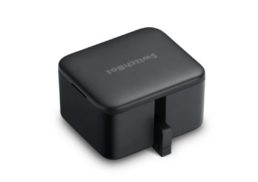Are you ready to unleash the true potential of GitHub Pages to build and host your website? If so, you’ve come to the right place! In this comprehensive guide, you’ll learn everything you need to know about GitHub Pages, from setting up your account to customizing your site to perfection. So, buckle up, and let’s dive into the amazing world of GitHub Pages!
Table of Contents
Key Takeaways
Create and deploy your website quickly and easily with GitHub Pages
Enjoy the benefits of static websites, including fast speeds, security & easy maintenance
Get the most out of your site by customizing it with a domain, themes & third party tools
Understanding GitHub Pages

GitHub Pages is an outstanding platform for hosting static websites straight from your GitHub repository, making it the go-to choice for countless web projects. Whether you’re a coding pro or just starting out, GitHub Pages offers a simple yet powerful way to create, manage, and deploy your website.
With an impressive 1 GB file size limit and a generous 100 GB per month soft bandwidth limit, GitHub Pages is perfect for non-commercial use and can be combined with a static site generator like Jekyll for even more advanced features.
What are Static Websites?
Static websites have a significant advantage over dynamic websites, as they’re built using only HTML, CSS, and JavaScript, without the need for server-side technologies. This makes them faster, more secure, and easier to maintain. Plus, you can use an md file (Markdown file) as the starting point for your GitHub Pages site.
Dynamic websites, built using robust programming languages like CGI, AJAX, ASP, or ASP.NET, offer highly interactive experiences. However, static websites deliver a steady user experience, making them ideal for hosting on GitHub Pages.
Lean more, visit Advantages to using GitHub Pages to generate static sites.
Advantages of Using GitHub Pages
GitHub Pages is incredibly user-friendly and offers numerous advantages compared to other web hosting platforms, making it an excellent choice for hosting your project site. Its ease of use, version control, and free hosting for public repositories make it hard to resist.
Hosting and publishing your website using the files in your repository is effortless with GitHub Pages, providing you with a smooth and seamless experience. This platform is an incredible opportunity for free hosting of public repositories.
Setting Up Your GitHub Account and Repository
To get started with GitHub Pages, you’ll first need to set up a GitHub account and create a new repository for your site. Don’t worry, it’s a piece of cake! With just a few clicks, you’ll be well on your way to building and hosting your very own website.
In this guide, we’ll show you how to create a GitHub account, establish a new repository, and manage your existing repository.
Creating a GitHub Account
Getting started with a GitHub account is as easy as 1-2-3! Simply head over to github.com, click the “Sign up” button, and provide a username, email, and password. Make sure to verify your email address to unlock the full potential of your GitHub experience.
When selecting a unique username, aim for something memorable and concise, avoiding any references to your current university, employer, or place of residence. And remember, when creating a password, it must be at least 8 characters long with a mix of uppercase and lowercase letters, and numbers for added security.
Creating a New Repository
Creating a new repository for your GitHub Pages site is a breeze! From the GitHub home page, click on the “New” or “Create repository” button located in the left panel, which will take you to a form where you can fill in your repo’s information. Give your repository a name, description, and choose its visibility settings (public or private). If you’re creating a user or organization site, remember to name your repository as user>.github.io or organization>.github.io, with lowercase letters for the user or organization name.
When you’re ready, click the “Create repository” button and start the process to upload files!
Building Your GitHub Pages Site

Now that you’ve set up your GitHub account and repository, it’s time to start building your GitHub Pages site! This involves structuring your website files, adding HTML, CSS, and JavaScript, and using Jekyll for enhanced functionality. Trust us, it’s easier than it sounds, and you’ll be amazed at the results!
Structuring Your Website Files
Start by organizing your website files in a logical manner, with separate folders for assets like images and stylesheets. This will help you maintain a clean and organized folder structure that’s easy to navigate and manage. The standard directory structure for a website includes a root folder (project folder) containing an index.html file for the homepage content, and an assets folder for images, icons, CSS files, font files, and other resources used in the website.
Organize files in a hierarchical structure that reflects their organization and purpose, separating files by type or page to create a more logical and organized folder structure.
Adding HTML, CSS, and JavaScript
Create your site’s content using HTML, CSS, and JavaScript, ensuring it’s static and does not rely on server-side technologies. Start by creating an html file, specifically the index.html, at the root of your repository, which will serve as the starting point for your site. To build the content of your site, add the necessary HTML, CSS, and JavaScript code to your repository, making sure to include all necessary files and assets like images and fonts. Utilize the command line for efficient file management and navigation during the development process.
Keep in mind that writing a clear commit message is key when making changes to your website, as it helps to track alterations in your GitHub repo.
Utilizing Jekyll for Enhanced Functionality
If you’re looking to take your GitHub Pages site to the next level, consider using Jekyll, a powerful static site generator that can be used with GitHub Pages to create more complex sites with features like blogging and templating. Jekyll offers a streamlined website creation process, total design control, comprehensive version control, improved performance, and seamless GitHub integration.
Creating blog posts with Jekyll on GitHub Pages involves the following steps:
Clone your site’s GitHub repository.
Navigate to the publishing source.
Draft a new file for your blog post.
Fill the file with content.
Save the file.
Push the changes to your repository.
Creating your GitHub Page is simple, and the GitHub site will take care of the rest!
Deploying Your GitHub Pages Site
After building your GitHub Pages site, the next step is deployment. Configuring the publishing source and pushing changes to your repository are the tasks involved. Just a few simple steps, and your site will be live, accessible to the world.
Configuring the Publishing Source
To configure the publishing source for your GitHub Pages site, follow these steps:
Head to the Settings tab of your repository.
Under the GitHub Pages section, select the desired branch or folder as the publishing source. This can be the master branch or a specific folder within your repository, depending on your preferences and project requirements.
Once you’ve selected your publishing source, save your changes.
Your site will be ready for deployment!
Pushing Changes and Updating Your Site
Once you’ve configured your publishing source, it’s time to push your changes to the repository using the git push command. GitHub Pages will automatically update your site after pushing changes, rebuilding your site with the updated code and deploying it to the web.
To view your published site, head to your repository Settings, click on Pages under the “Code and automation” section, and click “Visit site” under the “GitHub Pages” section. Congratulations, your site is now live!
Customizing Your GitHub Pages Site
With your GitHub Pages site now operational, you may wish to personalize it. Adding a custom domain, applying chosen themes, and integrating third-party tools and services are ways to achieve this.
We’ll delve deeper into each of these customization options next.
Adding a Custom Domain
To set up a custom domain for your GitHub Pages site, you’ll need to create DNS records and configure your repository settings. This process can take up to 48 hours, but it’s usually much faster.
To enable HTTPS for your site, simply check the “Enforce HTTPS” box in your repository settings, ensuring a secure connection for your visitors. With a custom domain in place, your GitHub Pages site will stand out and be more memorable for your audience.
Selecting and Applying Themes
Give your GitHub Pages site a fresh look by choosing from a variety of pre-built themes, such as:
Minimal
Cayman
Architect
Slate
You can also create your own custom theme. To apply a new theme, go to your GitHub repository settings, select the “Theme” option, and choose a new theme from the available options.
With a new theme in place, your site will have a more stylish and functional look that will captivate your audience.
Incorporating Third-Party Tools and Services
Enhance your site’s functionality by integrating third-party tools and services, such as analytics or contact forms. These tools can help you monitor your site’s performance, improve user experience, and add valuable features to your site. Popular third-party tools and services that can be integrated with GitHub Pages include Google Analytics, Formspree, 99Inbound, and Disqus.
By incorporating these tools and services, you’ll supercharge your GitHub Pages site, making it more powerful and versatile.
Best Practices for GitHub Pages Sites
Adhering to best practices is key to the success of your GitHub Pages site. These practices encompass usage of Git for version control and collaboration, site performance optimization, and attention to security considerations in code repositories.
Following these best practices will result in a highly efficient and secure website capable of impressing your audience.
Version Control and Collaboration
For efficient and effective management of your GitHub Pages projects, using Git for version control and collaboration is crucial. Here are some best practices to follow:
Keep commits small and focused.
Use clear and concise commit messages.
Branch frequently to isolate changes.
Test before committing.
By following these practices, you can ensure smooth and organized management of your GitHub Pages projects.
By following these best practices, you’ll be able to collaborate with others on your projects, track changes, and revert to previous stages when needed.
Performance Optimization
Performance optimization of your site is vital to offer a seamless and enjoyable user experience. Here are some ways to optimize your site’s performance:
Compress images using tools like ImageOptim and Imgbot
Minify HTML, CSS, and JavaScript code with tools like Minify or HTMLMinifier
Consider using a content delivery network (CDN) to improve your site’s speed and performance.
By following these performance optimization tips, your site will load faster, rank higher in search engine results, and provide a better experience for your users.
Security Considerations
Prioritizing your site’s security is paramount. Keep dependencies up-to-date, use HTTPS, and follow best practices for secure coding to protect your site from potential threats.
By taking these security measures, you’ll safeguard your website, ensuring it remains secure and protected from any potential security risks.
Summary
In this comprehensive guide, we’ve covered everything you need to know about mastering GitHub Pages. From setting up a GitHub account and repository to customizing and deploying your site, you now have the knowledge and tools to create a stunning and powerful website with GitHub Pages. Embrace these best practices, and let your creativity shine as you build and host your very own website on GitHub Pages. The possibilities are truly endless!
Frequently Asked Questions
What is GitHub Pages used for?
GitHub Pages is a web hosting service that lets you easily create and deploy a website. You can store all of the files and code for your website in your GitHub repository, and use GitHub Pages to generate a personal URL and share your site with the world. GitHub Pages also allows you to publish website code live on the Web.
How much do GitHub Pages cost?
GitHub Pages is free of charge for everyone with a GitHub account, allowing you to create and host pages with no extra cost. If you wish to host web apps, however, you will need to purchase a server.
What is the difference between GitHub and GitHub Pages?
GitHub is a popular version control system, while GitHub Pages is a static site hosting service which allows users to publish websites live on the Web. GitHub Pages takes HTML, CSS, and JavaScript files straight from a repository on GitHub and runs them through a build process. Users can register one User Page and an unlimited number of Project Pages for their account.
How do I get started with a GitHub account?
Get started with a GitHub account quickly and easily by visiting github.com, clicking “Sign up”, and entering your username, email, and password. Start coding today!
What is the difference between a static website and a dynamic website?
Static websites use HTML, CSS, and JavaScript to show content, while dynamic websites include server-side technologies to generate the pages and respond to user input.










